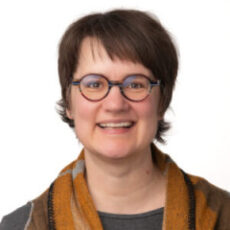Object-Based Learning
Kim GoughLearning Program Developer
How did you get started working in museums?
I had just finished university and moved back home, when a friend of mine asked if I could help with a special event at the historic site where she worked. I volunteered for the special event and I was hooked. I kept on volunteering there, and that summer I was hired. I ended up working as a costumed interpreter for five years.
What do you do as a learning program developer?
The main job of someone who works in museum education is to be curious and to foster that curiosity in others. I work on creating special events, workshops, gallery programs and outreach programs for people to engage more with the Royal BC Museum, its research, collections and stories. As I am not a topic specialist, I spend a lot of time learning about history, natural history and different subjects related to our feature exhibitions. To help me learn, I visit the museum galleries, look at objects, read and, talk to curators and other museum staff, volunteers and visitors.
What do you like about working with objects?
What I like most about working with objects is how they grab people’s attention. It doesn’t matter if it is a group of school children or seniors, if you bring out an object and let them handle and discover it, the time just flies by.
Stories by or about this person
Watch seniors engage with mystery objects from a Royal BC Museum outreach kit. Object-based learning stimulates thinking and the opportunity to spend time sociably with others.
Learning Program Developer Kim Gough describes a hands-on, inquiry-based activity with objects that can be adapted for any classroom.


